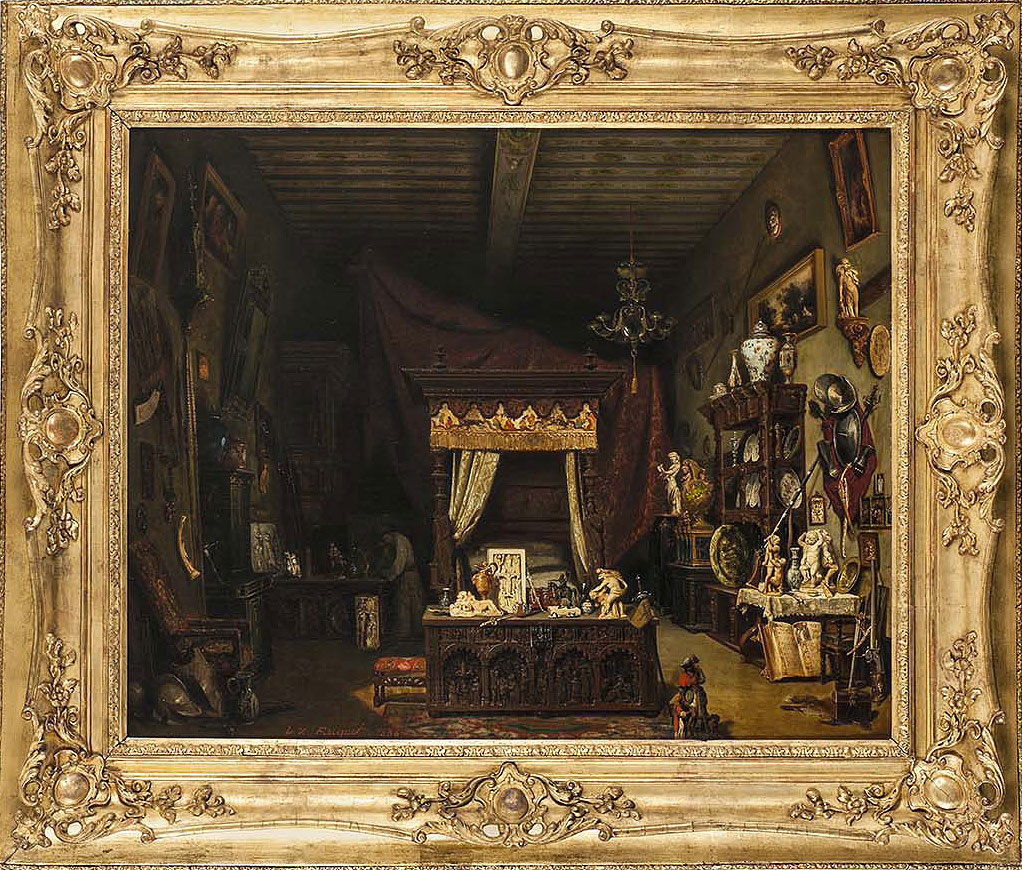


If you want to use this picture, please contact our library

Although the furniture and objects on display did not belong to Baron Hope, they faithfully recreate the atmosphere of contemporary interiors. A keen interest in the Middle Ages and the Renaissance manifested itself in France in the 1830s. Alexandre du Sommerard’s study, whose collection formed the nucleus of the Musée de Cluny, is an example of this taste for mixtures of objects from all periods. On the chest of drawers by Alexandre-Louis Bellangé there is an array of late 16th-century German stoneware and pieces from the 1830s such as the bottle and jug by Jules-Claude Ziegler and the Flemish vase by Claude-Aimé Chenavard. The candelabras and the bronzes by Antoine-Louis Barye were inspired by Florentine Renaissance bronzes.
Unlike the Restoration, which preferred light-coloured woods, a new taste for dark woods such as mahogany, ebony and blackened pearwood emerged in the 1830s. The tracery and polychromy of the carpet by Chenavard is a tribute to the art of the Renaissance. Likewise, the bed in the alcove, designed by the ornamental sculptor Michel Liénard, is decorated with a nymph in the style of the great 16th-century sculptor Jean Goujon. But such references to the past were by no means an expression of a reactionary tendency in art. The bed is an example of France’s developing industry: made in cast iron, it was ordered from a catalogue and delivered in separate pieces.